The Extremadura region offers rolling countryside and Roman, Jewish and Arab history to explore. Plus, cool plazas and great food when you stop
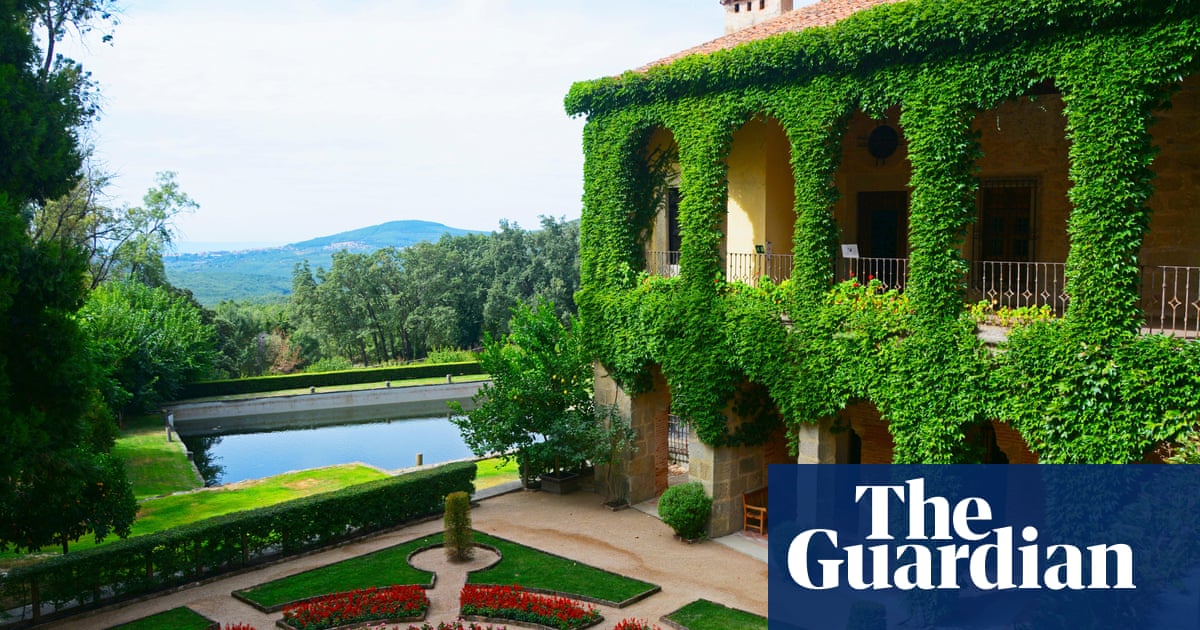
Extremadura takes a little bit more effort to get to than many other parts of Spain. And because there is no beach, few of the 82.8 million people who visited Spain last year went to the region. Yet it is home to some of the countrys finest medieval towns and Roman architecture and all the people who created Spain (Romans, Goths, Jews, Arabs) have made their mark here.
Visitors should pick up their hire car in Madrid and set the GPS for Navalmoral de la Mata. Pay attention getting out of town as the ring road is a nightmare. Once on the A5 head to Talavera de la Reina for a first encounter with classic Extremeo landscape: dehesa, rolling acres of holm oaks. This is what much of Spain looked like long ago before the trees were chopped down for firewood and shipbuilding, but here the oaks have been preserved so that blackfoot pigs can feed on their acorns and produce Spains treasured jamn de bellota (acorn-fed ham).
Head up into the hills to Jaraz de la Vera, famed for its smoked pimentn (paprika) theres even a pimentn museum in the village. Carry on through the wooded hills towards Jarandilla de la Vera and book yourself into the rural hotel Villa Xarahiz (doubles from 70 B&B), which also has a good traditional restaurant with a 12 lunch menu. In the morning visit the Monasterio de Yuste (admission 7) then head south, dropping down off the sierra and through tobacco fields to Navalmoral where you pick up the A5 again.
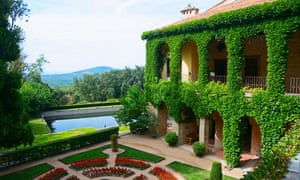
Stop off at Trujillo, the birthplace of Francisco Pizarro, the conqueror of Peru, and to several hundred other conquistadores who returned home to build palaces around the towns square, one of the finest in Spain. One perfectly acceptable version of the afterlife would be to spend eternity sipping something nice and watching the light change in Trujillos Plaza Mayor. Stay at Eurostars Palacio Santa Maria (doubles from 60 B&B), a converted 16th-century palace. There are two museums Casa-Museo de Pizarro and Centro de Visitantes Los Descubridores in the town dedicated to Pizarro and his fellow conquistadores, though they give a one-sided view of the defeat of the indigenous Inca population. Dine at Meson Asador Alberca (menus at 15 and 21) or, if you can ignore the brash lighting, go to Restaurante Sandra for a plate of good jamn (20) and the local cheese speciality, torta de casar. Extremadura red wine, mostly from the Almendralejo area, is excellent and almost unobtainable elsewhere.
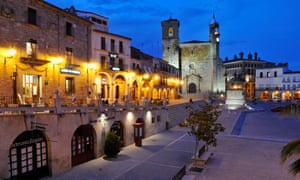
On day three head east into the hills to Guadalupe for a visit to this pretty hilltop town, its 13th-century monastery and gardens. Columbus made a pilgrimage here after this first voyage to give thanks for discovering America. Have lunch in the cloister of the Hospederia del Real Monasterio (three-course lunch 20) before heading back to Trujillo for a gin and tonic in the plaza then dine in El Mirador de las Monjas where dishes on the 20 menu include garlic soup, trout and calfs cheek casserole.
From Trujillo its just a 20-minute drive west to Cceres whose medieval centre is a Unesco world heritage site. The citys fortunes rose and fell with the Romans, Moors and thrived during the New World conquest. It was home to one of Spains largest Jewish communities until their expulsion in 1492 under the Alhambra Decree. You get a good idea of its history at the museum (free) in the old city that contains a perfectly preserved aljibe, an Arab technique for conserving rain water. There are a variety of restaurants and tapas bars to choose from around Plaza San Juan, the charming Meson San Juan among them, or for something less traditional try the Tapera Torre de Sande. The Hotel Palacio de Oquendo offers double rooms at 90.
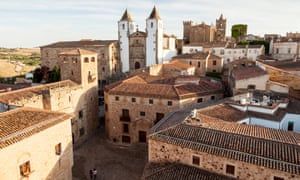
On day five take the A66 75km south through the dehesa to Mrida, which has more Roman remains than any other city in Spain as well as the magnificent Moorish Alcazaba fortress, all within easy walking distance of each other. Mrida was founded by Augustus in 25BC and became the capital of the province of Lusitania. Its worth buying a single ticket that will give you entry to all the monuments and museums (adult 15, under-18 7.50). Start at the Roman bridge across the River Guadiana and work your way up town, starting at the Alcazaba, then stroll up through to the towering temple of Diana. The real spectacle, however, is the complex that includes the Roman theatre and the 15,000-seat amphitheatre built in 8BC. An international festival of classical theatre is held in the Roman theatre every summer. Good places to eat include A de Arco (for tapas) and La Tahona (two-course dinner around 20). Stay at the Parador de Mrida (doubles from about 70 room-only), an 18th-century convent.
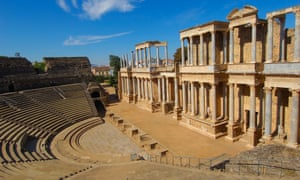
On your second day in Mrida a visit to the National Museum of Roman Art is a good idea. The building is impressive and the artefacts are well displayed, the mosaics in particular. The museum will give you some context to what youve been looking at, although only some of the written information is in English. There are audio guides available.
On day seven its a short hop to Badajoz on the Portuguese border and much of the architecture has a Portuguese feel, as do the tiled street names. The huge Alcazaba that dominates the town on a hill above the majestic Guadiana river boasts the longest ramparts in Spain. This is your last day in Extremadura so order a plate of jamn and a glass of red wine, perhaps some Habla de Silencio, in the Bar Corchuela or El Ajo Negro and, after a night in the Gran Hotel Zurbarn (doubles from about 70 B&B) , head off on the two-hour drive to Seville, Andalucas capital city, for the last three nights of the trip.

On the way make a short detour to Zafra, a pretty white-washed town with more conquistador history. Enjoy a cup of coffee in the colonnaded Plaza Grande.
In Seville, you wont be needing the car. Book into the central Apartamentos La Casa del Pozo (doubles from 70 room only) or the Casa Palacio Don Pedro (doubles from 65). There is so much to see and do in Seville, from la Giralda to the breathtaking Alcazar palace to the vast cathedral and the Plaza de Espaa. There is also a small Jewish museum in Santa Cruz. Its a great city for walking, too, especially the San Bernardo, San Bartolome and Santa Cruz neighbourhoods. And theres a whole other Seville across the River Guadalquivir in Triana thats not to be missed. Salmorejo, the citys take on gazpacho, is a signature dish. Eat at Michelin-listed Puratasca in Triana or the stylish DCulto in La Buhaira. At lunchtime you can eat fish straight off the market stalls at La Cantina, sending you home with the salt taste of pescaditos washed down with a glass of fino.
Total distance: 880km
Looking for a holiday with a difference? Browse Guardian Holidays to see a range of fantastic trips
This article contains affiliate links, which means we may earn a small commission if a reader clicks through and makes a purchase. All our journalism is independent and is in no way influenced by any advertiser or commercial initiative. By clicking on an affiliate link, you accept that third-party cookies will be set. More information.


Recent Comments